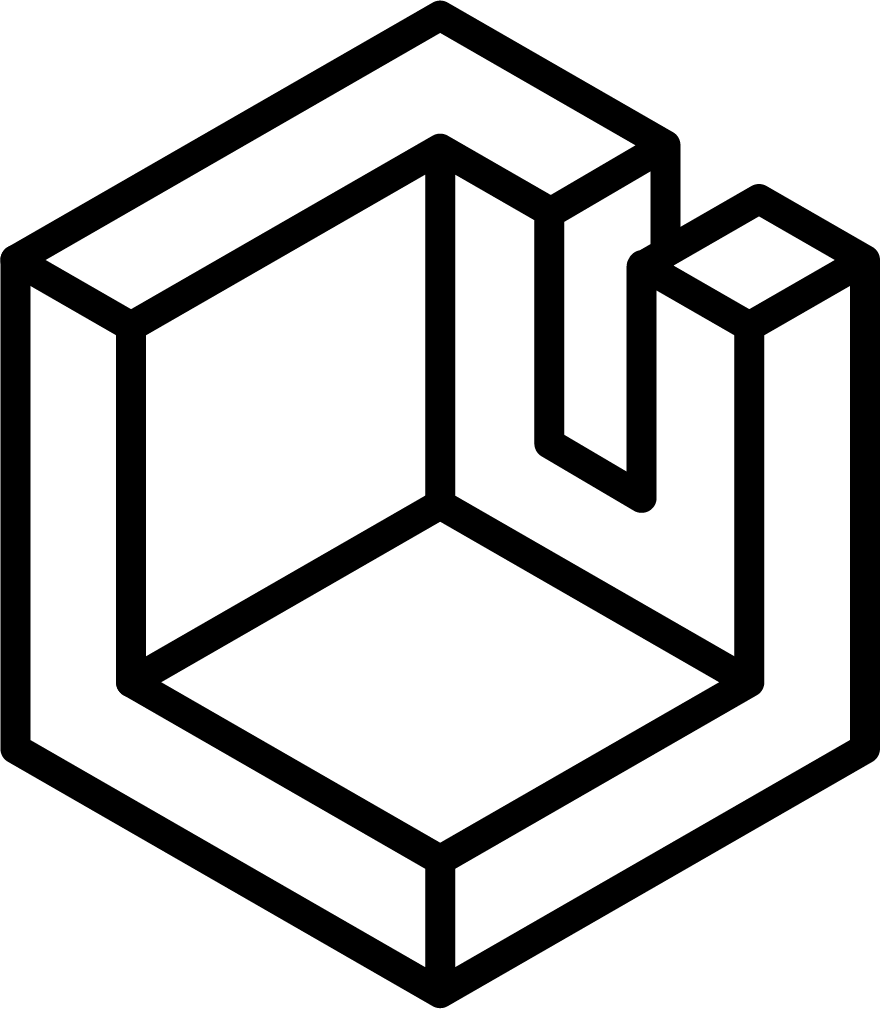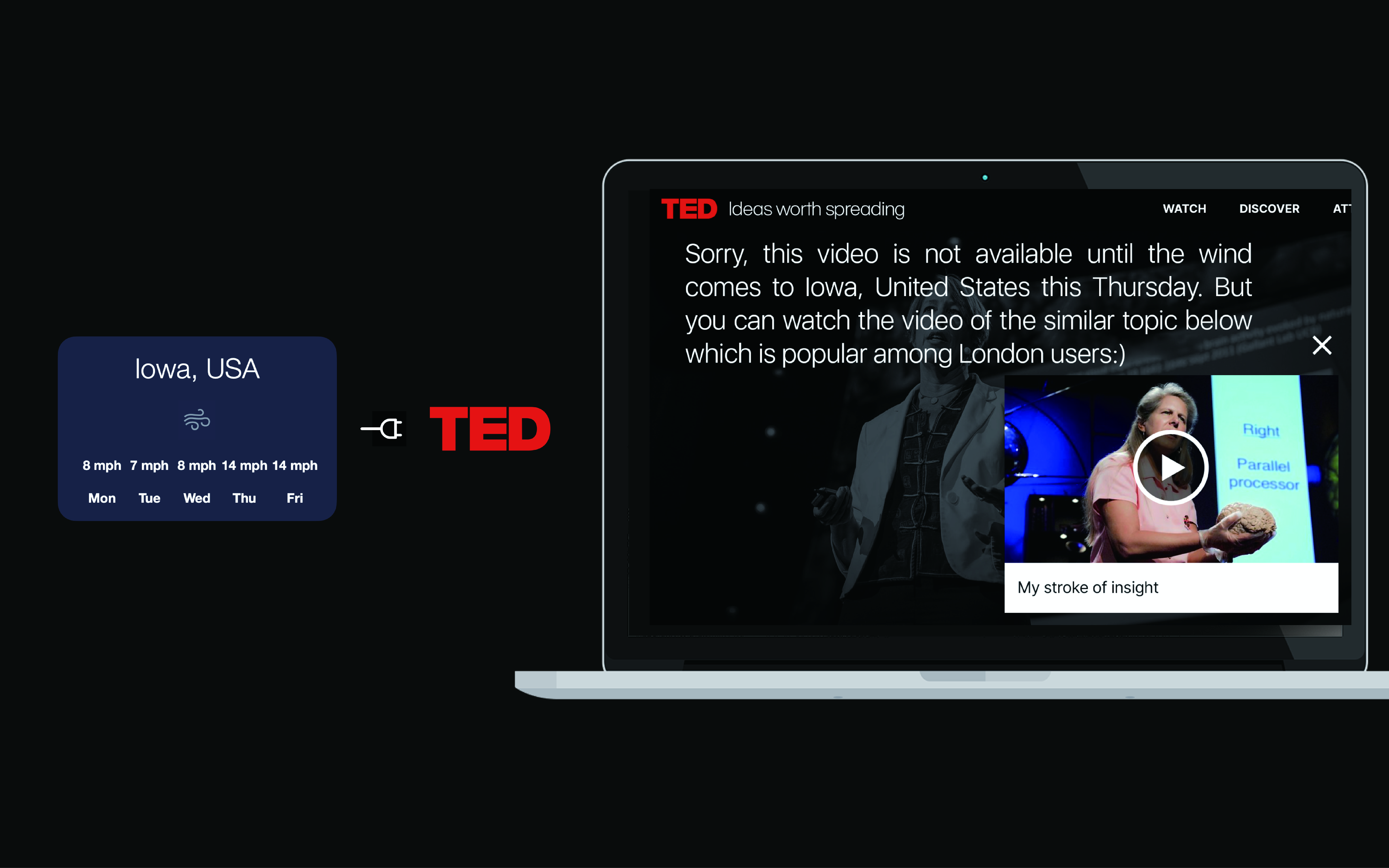Onlign OS and Applications
Design Speculation / UX Design
Solo Project / 2020 / 12 Weeks
The internet has a large and invisible carbon footprint, and it’s growing fast. The internet industry accounts for 3.7% of global greenhouse gas emission, which is the same amount of aviation industry, according to some estimates. When you sit cosily in front of your computer streaming a 1 hour Netflix episode, the energy consumed by the data centre and data transmission behind the scene is able to power your lamp for 100 hours. As the shift to digital accelerates, we need to think about how to control this invisible carbon-emitting giant.
Facing the urgency of climate change, how might we shape the future of a greener internet? The environmental organisations, tech giants and radical technologists are pushing for renewable energy powered data centres. While the current internet is 24/7, renewable energy like wind, solar and tidal power is intermittent. The end-user behaviour plays a fundamental role in the growing consumption of the internet and will decide the limit of the greenness of the internet in the future. The project explores the possibility of aligning internet usage with the availability of renewable energy to minimise individuals’ internet carbon footprint.

Research
Interview – Information, awareness and alternative
I invited 10 people to participate in my one-on-one sessions focusing on understanding how they would feel and might do given more information and choices of their Internet use. First, their current Internet usage profiles were outlined by the time they spent in different categories of applications. Then I used card activities to assist in a conversation with the participants about their perception and attitude.
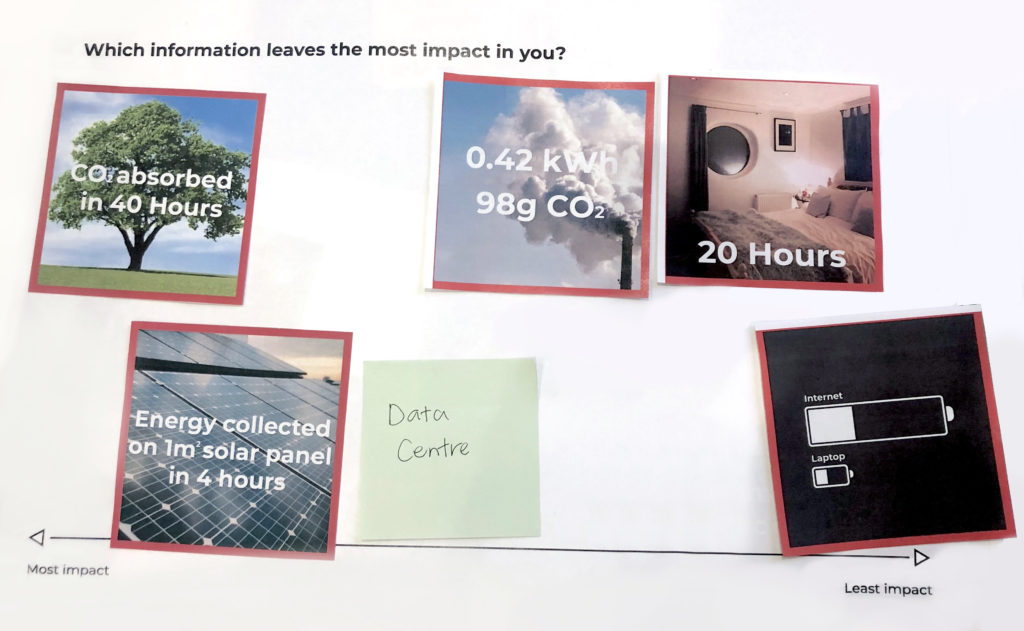
Experiment – Nature Controlled Internet
What if one day we had to depend on our internet use on the weather? I invited 10 people to participate in my one-on-one sessions to go through 5 scenarios in this speculative Internet. Participates were presented with images, videos and audios as the experience mockups. Information of power source, weather and time is provided to complete the contexts.
Advanced experiment: A Chrome extension
This extension is built to help people minimise their Internet carbon footprint. It informs the user whether a given hour is an Internet “green time”(low carbon intensity, mostly powered by renewable energy) or “dirty time”(high carbon intensity, mostly powered by fossil fuel), and encourage them to choose less data-consuming activities during “dirty time”.
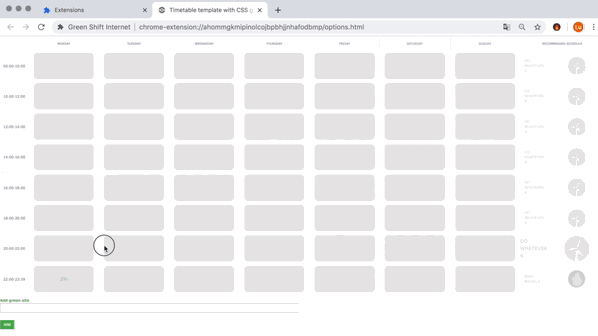
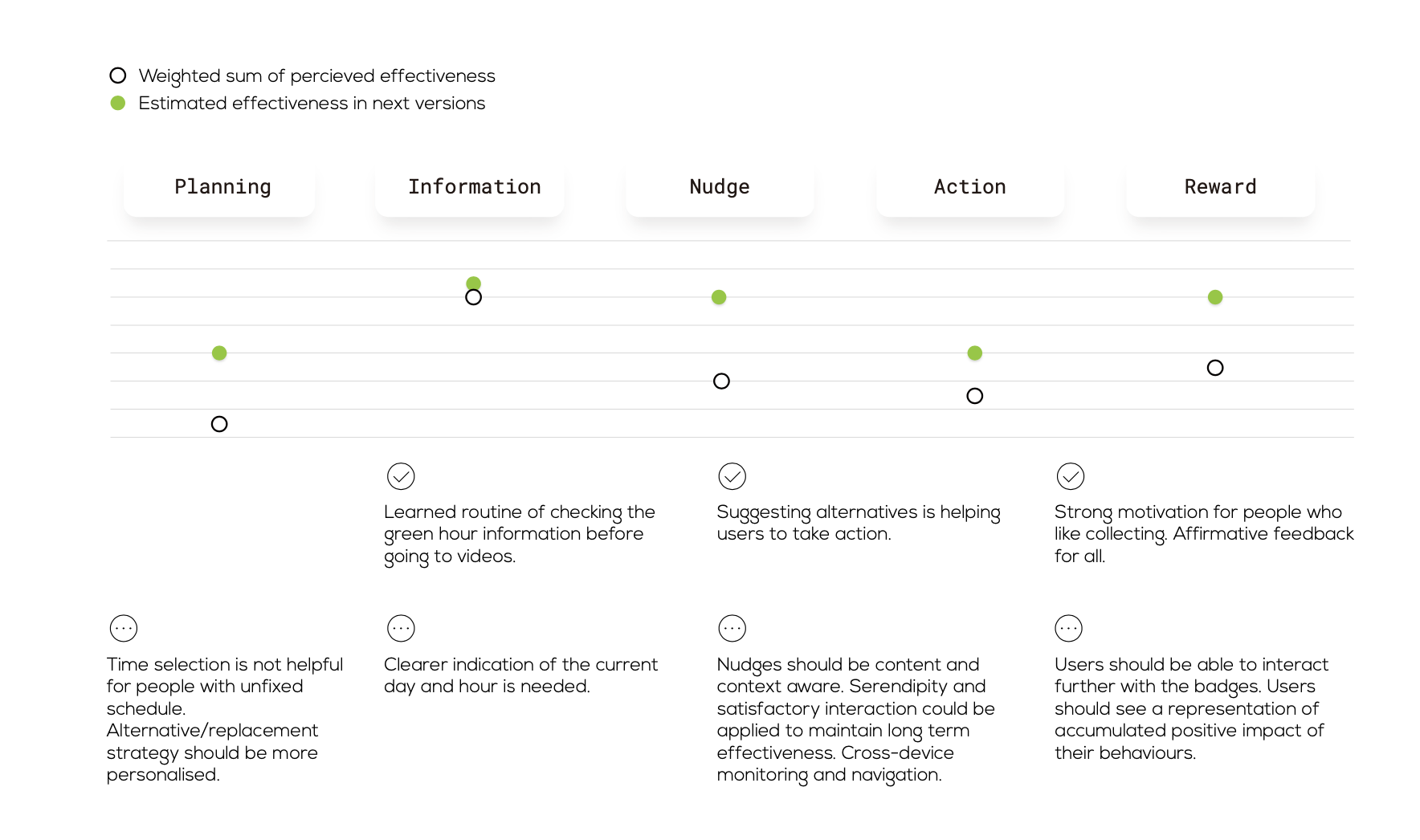
Testing: A qualitative feedback session was done with each participant after the 5-day testing. All the participants reported proactive behaviour change throughout the testing at a different level.
Insight Into Manifesto
In a time of climate urgency, by embracing renewable energy and designing for carbon-aware internet experience, we can accelerate the movement towards a sustainable internet. It is the designers‘ responsibility, moreover, to make the carbon-aware applications intriguing, beautiful and easy to embrace by:
01 Provide information on carbon intensity
02 Help the user schedule according to the carbon intensity forecast
03 Nudge people into low data alternatives when carbon intensity is high
04 Make the alternative and the low carbon mode appealing and fun
05 Give the user meaningful feedback
Onlign OS and Applications — A Speculation
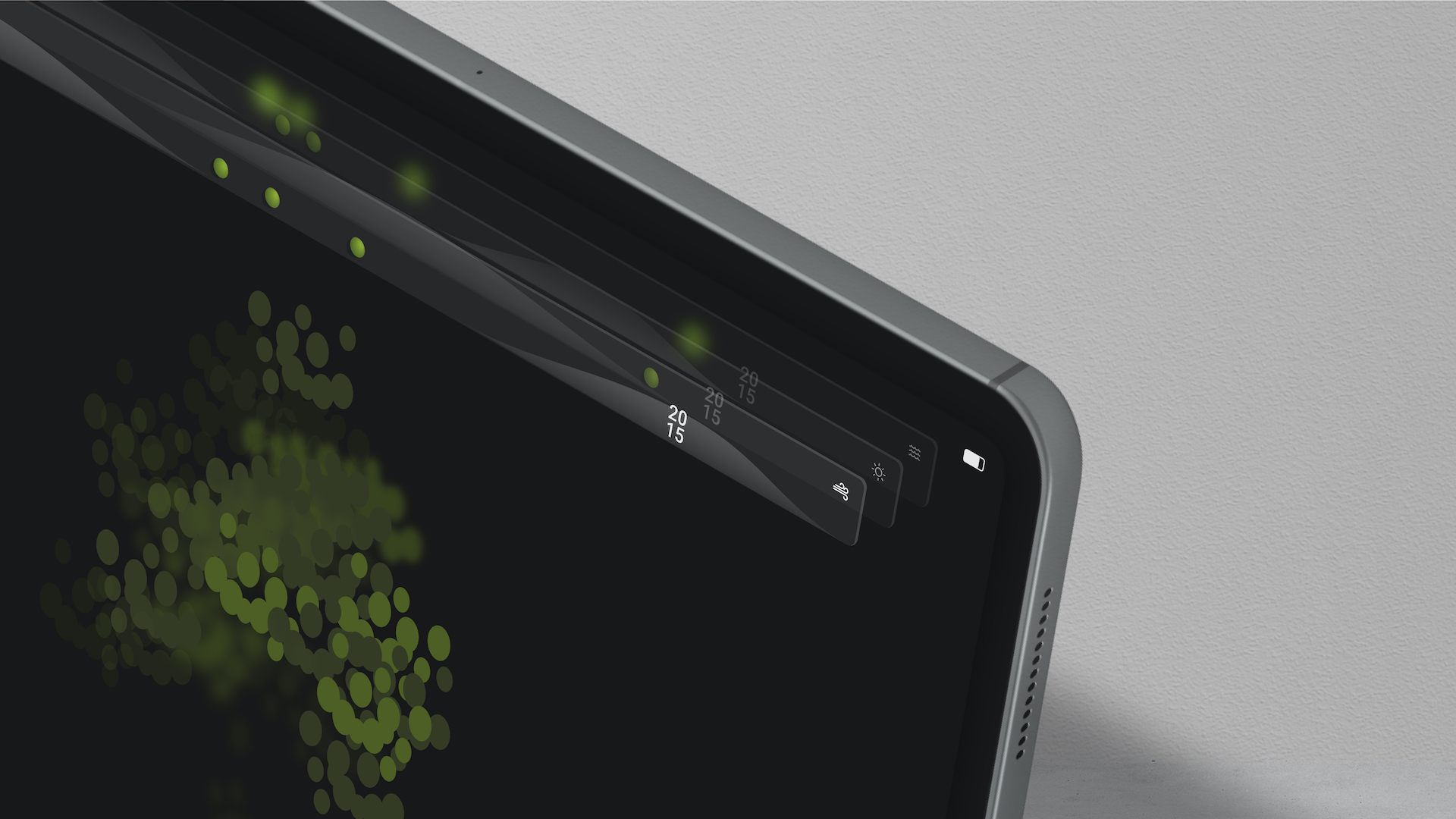
The status bar shows the low carbon energy availability timeline by energy types and keeps a record of green actions.
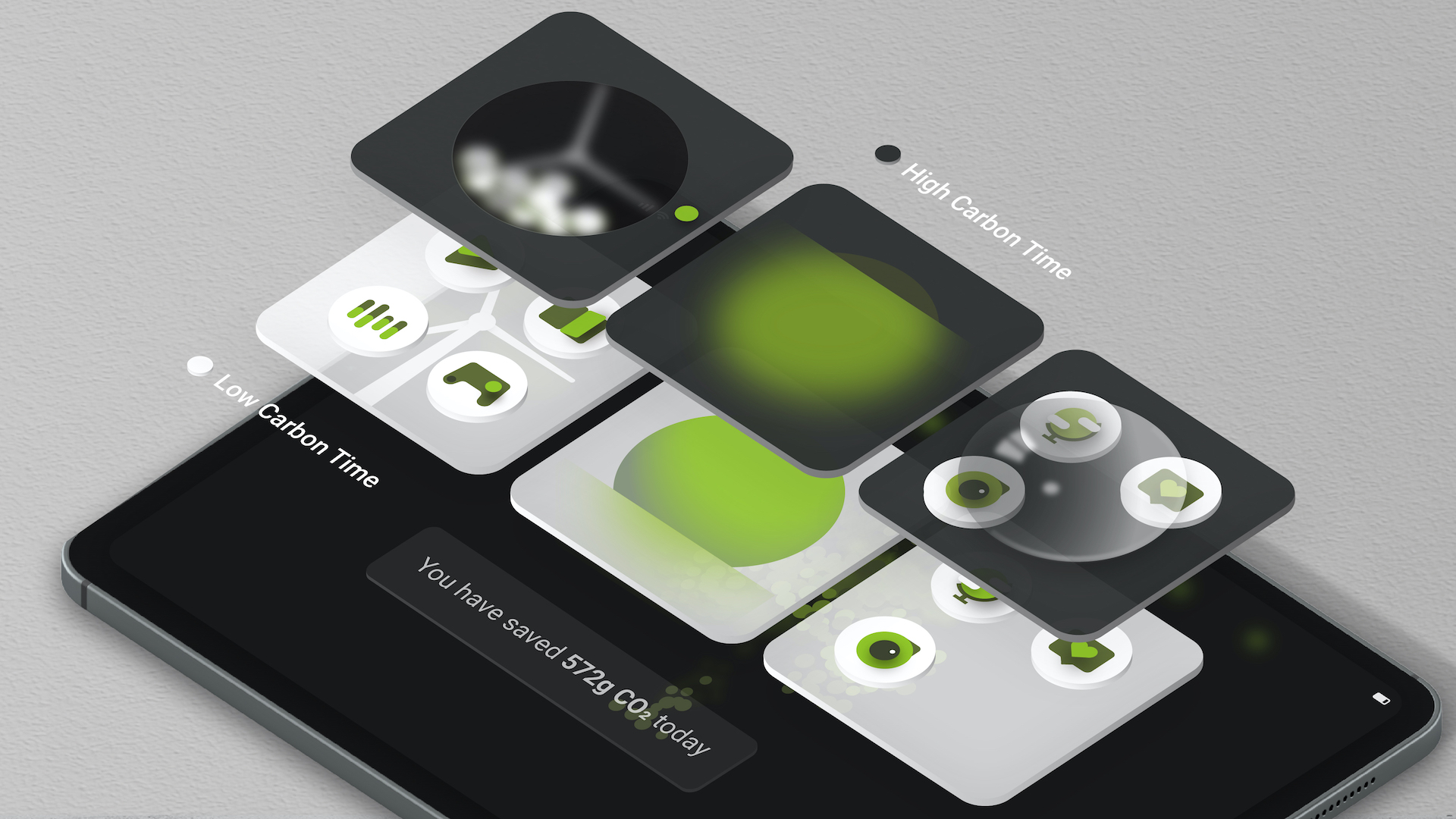
Different visuals of the home screen launcher depending on energy status.
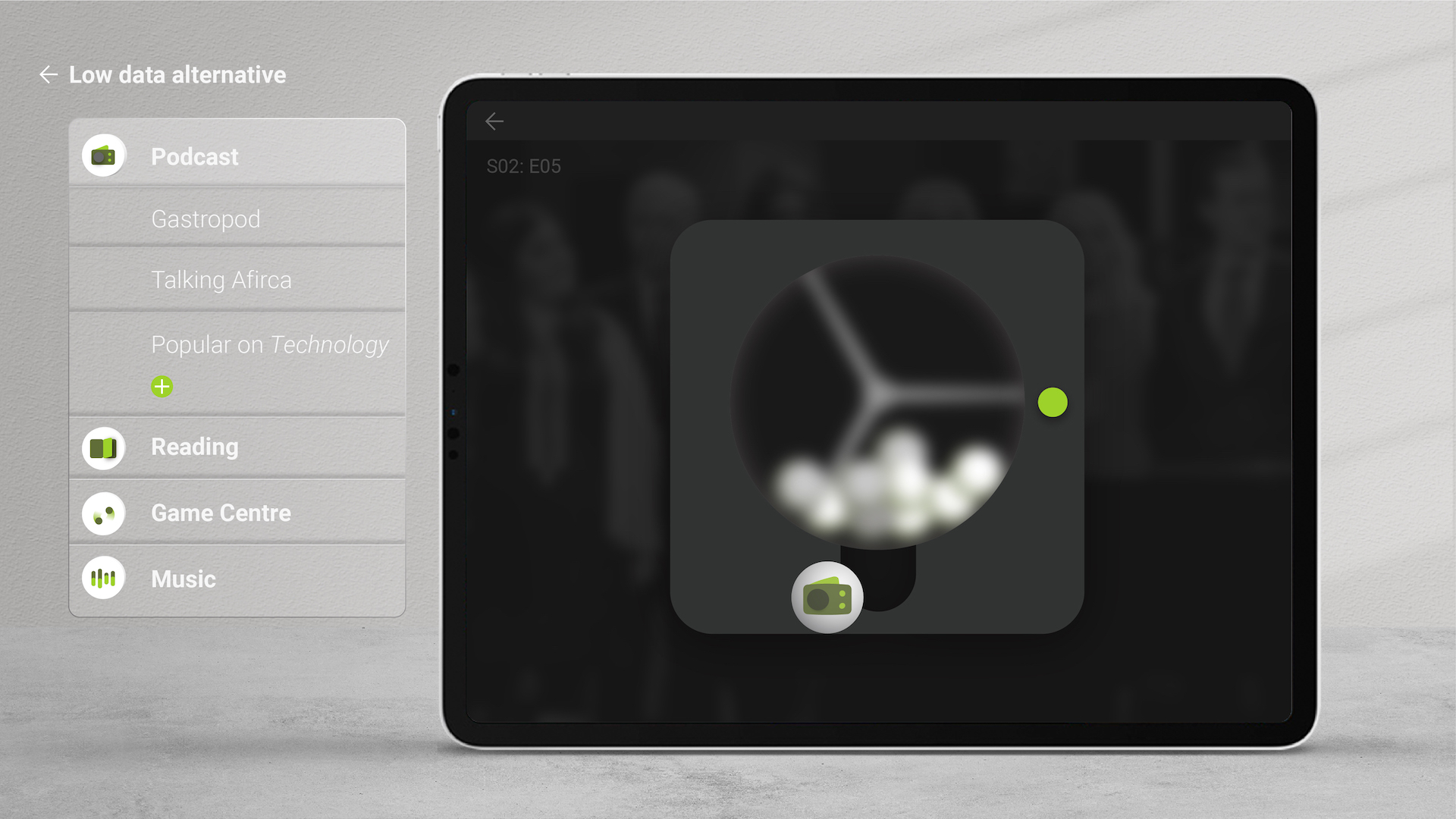
The user customises the balls in the Navigation Lottery for later contextualised low data alternatives.

The low data alternative for video calling offers a subtle sense of connection across the internet.
Exhibition
To be exhibited on Dutch Design Week, 17th – 25th October 2020
Exhibited on RCA2020 Show and selected in the collection Designing for Difficulty curated by Tim Brown (IDEO), 15th – 31st July 2020
Publication
Academic Research
Onlign is my degree project at MA/MSc of Innovation Design Engineering at Royal College of Art and Imperial College London.
